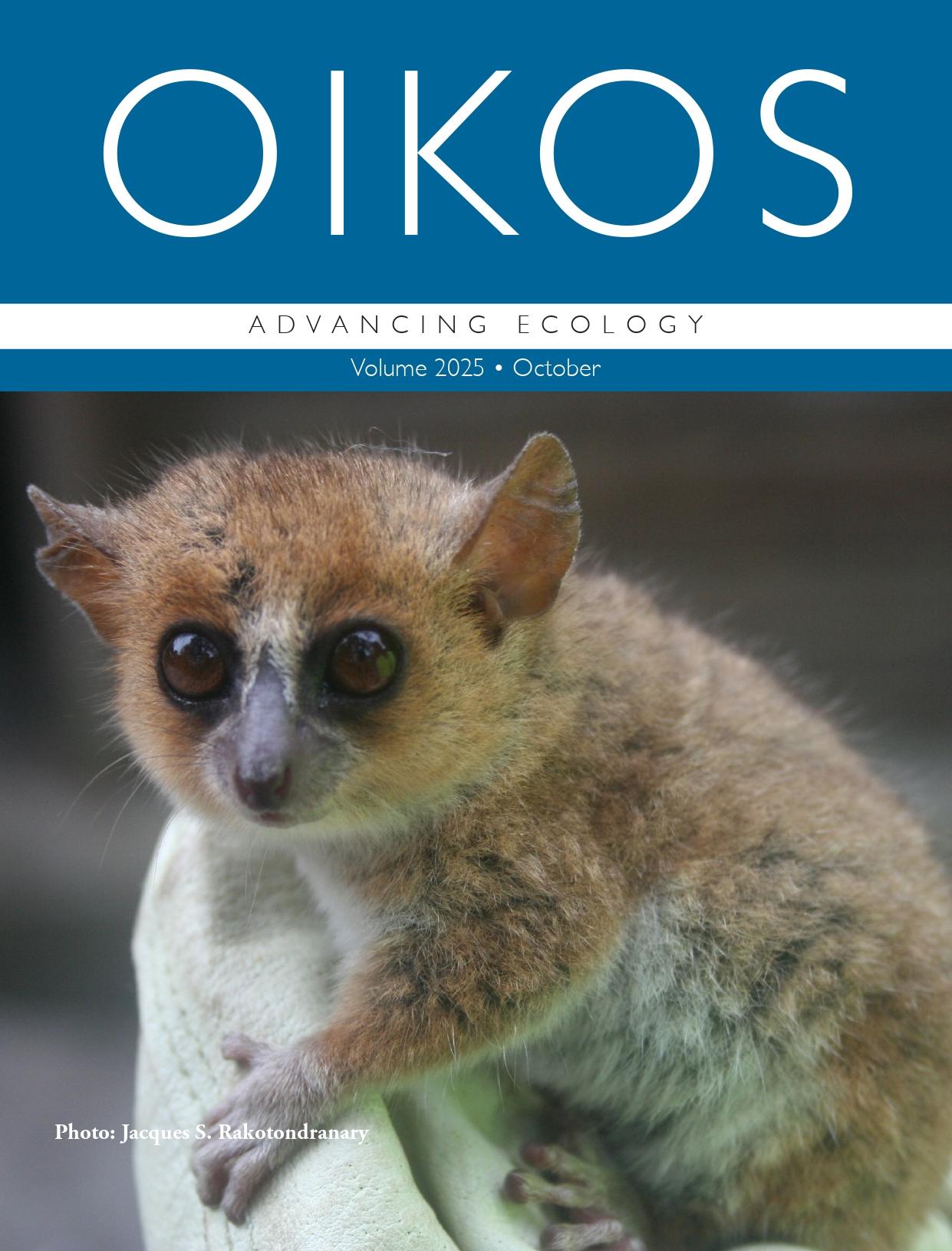Cover October 2025
Submitted by editor on 8 October 2025.
A long-term study of mouse lemurs conducted by Vallejo-Vargas et al. (2025) in Madagascar shows that protected forests significantly boost survival compared to degraded habitats. Their paper, titled "Effects of management strategies on the survival probability of a small remnant population of mouse lemurs" contrasts this with translocated individuals, whom fare much worse—underscoring the value of protected areas and the need for caution in conservation translocations.
Abstract: Multiple management strategies have been put in place in Madagascar to slow down biodiversity loss, but evidence for their effectiveness remains scarce. Using a long-term monitoring dataset and a custom-built capture–mark–recapture model, we evaluated the effect of a protected area and translocations on the survival of mouse lemurs Microcebus murinus in the littoral forests of southeastern Madagascar. We found that female mouse lemurs had overall higher apparent survival than males, that annual survival probabilities were higher for both sexes in protected forest fragments compared to degraded ones, and that survival of translocated individuals was on average 66% lower than residents. We also evidenced a positive effect of monthly temperature on female survival in protected fragments but found no temporal trend in survival. This study confirms the importance of protected areas as a conservation tool and calls for careful planning of translocation efforts for conservation of short-lived primate species.